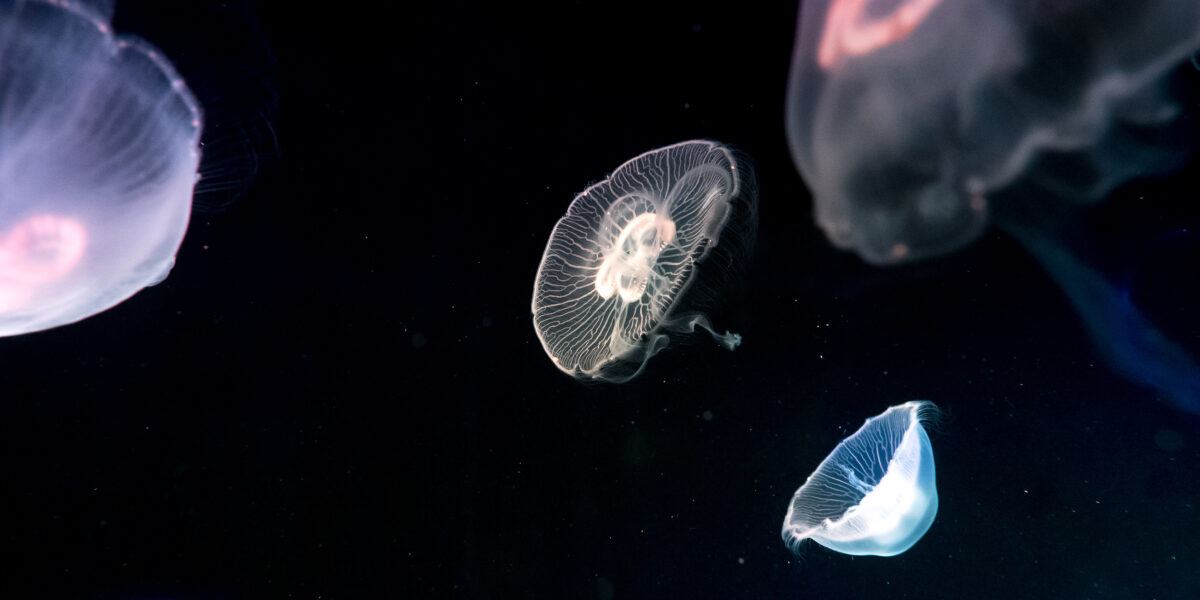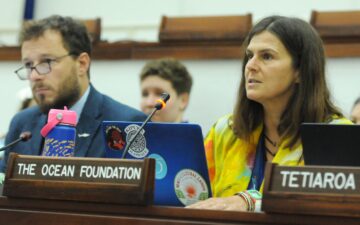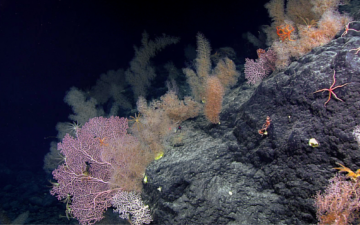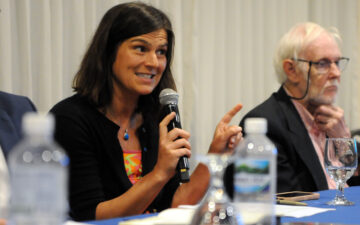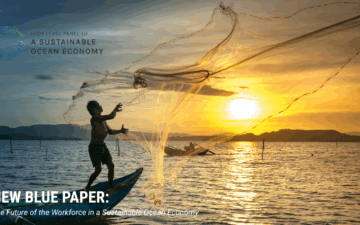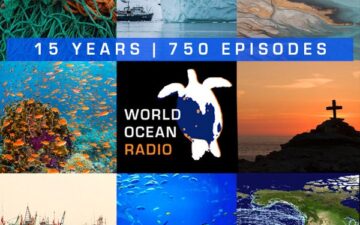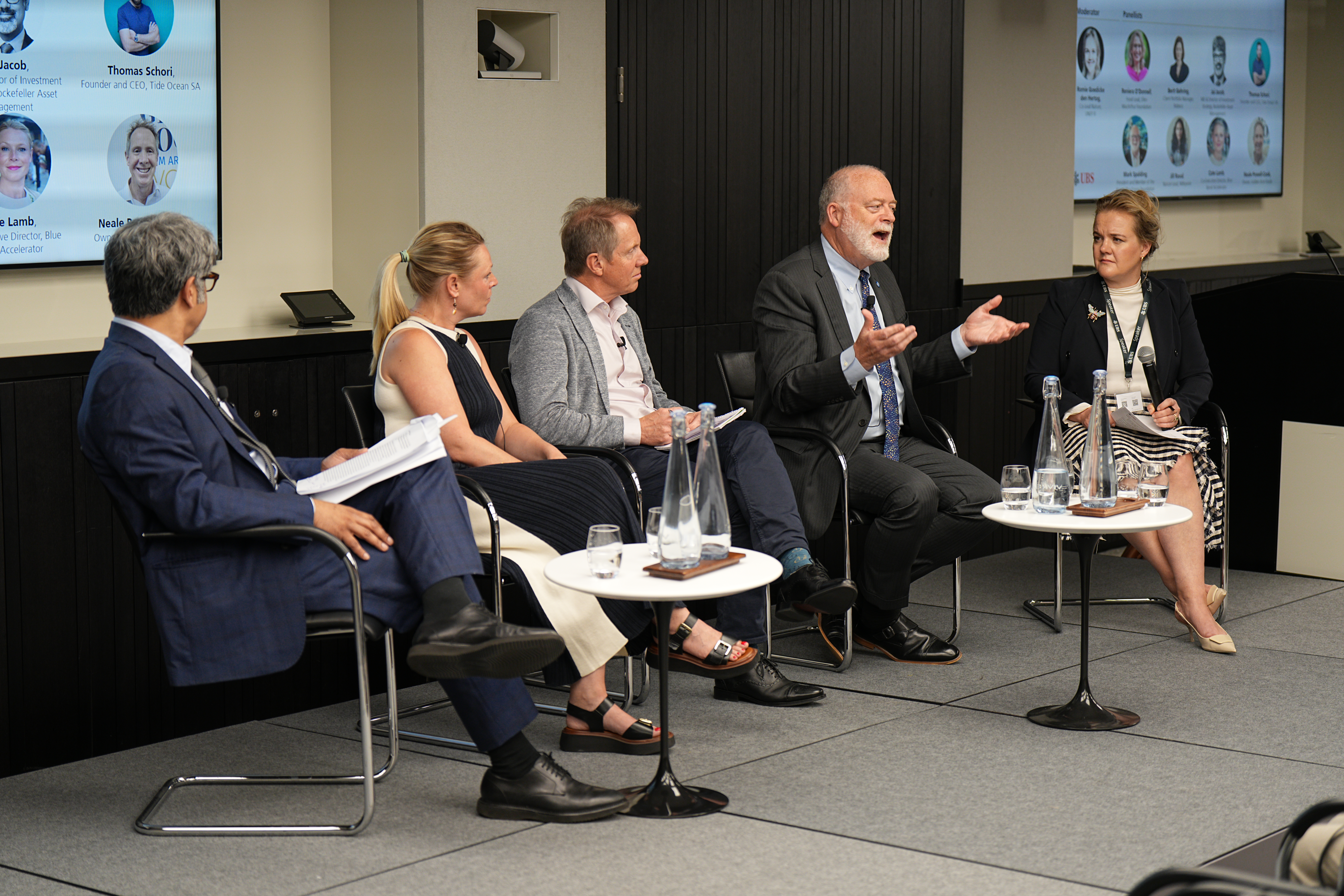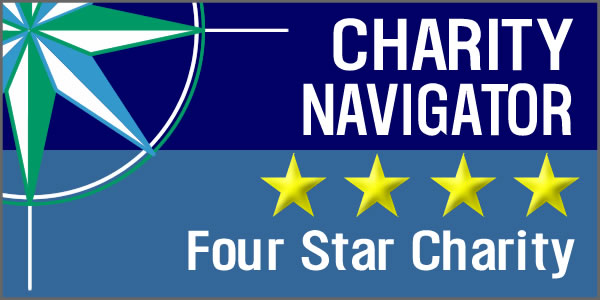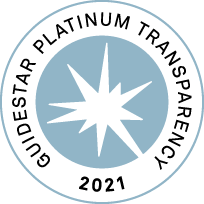BACK TO RESEARCH
Table of Contents
1. Introduction
2. Where to Start Learning about Deep Seabed Mining (DSM)
3. Deep Seabed Mining’s Threats to the Environment
4. International Seabed Authority Considerations
5. Deep Seabed Mining and Diversity, Equity, Inclusion, and Justice
6. Technology and Minerals Market Considerations
7. Financing, ESG Considerations, and Greenwashing Concerns
8. Liability and Compensation Considerations
9. Deep Seabed Mining and Underwater Cultural Heritage
10. Social License (Moratorium Calls, Governmental Prohibition, and Indigenous Commentary)
1. Introduction
What is Deep Seabed Mining?
Deep seabed mining (DSM) is a potential commercial industry that is attempting to mine mineral deposits from the seafloor, in the hopes of extracting commercially valuable minerals such as manganese, copper, cobalt, zinc, and rare earth metals. However, this mining is posed to destroy a thriving and interconnected ecosystem that hosts a staggering array of biodiversity: the deep ocean.
The mineral deposits of interest are found in three habitats located on the seafloor: the abyssal plains, seamounts, and hydrothermal vents. Abyssal plains are vast expanses of the deep seabed floor covered in sediment and mineral deposits, also called polymetallic nodules. These are the current primary target of DSM, with attention focused on the Clarion Clipperton Zone (CCZ): a region of abyssal plains as wide as the continental United States, located in international waters and spanning from the west coast of Mexico to the middle of the Pacific Ocean, just south of the Hawaiian Islands.
How Might Deep Seabed Mining Work?
Commercial DSM has not started, but various companies are trying to make it a reality. Currently proposed methods of nodule mining include the deployment of a mining vehicle, typically a very large machine resembling a three-story tall tractor, to the seafloor. Once on the seabed, the vehicle will vacuum the top four inches of the seabed, sending the sediment, rocks, crushed animals, and nodules up to a vessel waiting on the surface. On the ship, the minerals are sorted and the remaining wastewater slurry of sediment, water, and processing agents are returned to the ocean via a discharge plume.
DSM is anticipated to impact all levels of the ocean, from waste dumped into the midwater column to the physical mining and churning of the ocean floor. There is also risk from the potentially toxic slurry (slurry = a mixture of dense matter) water dumped into the top of the ocean.
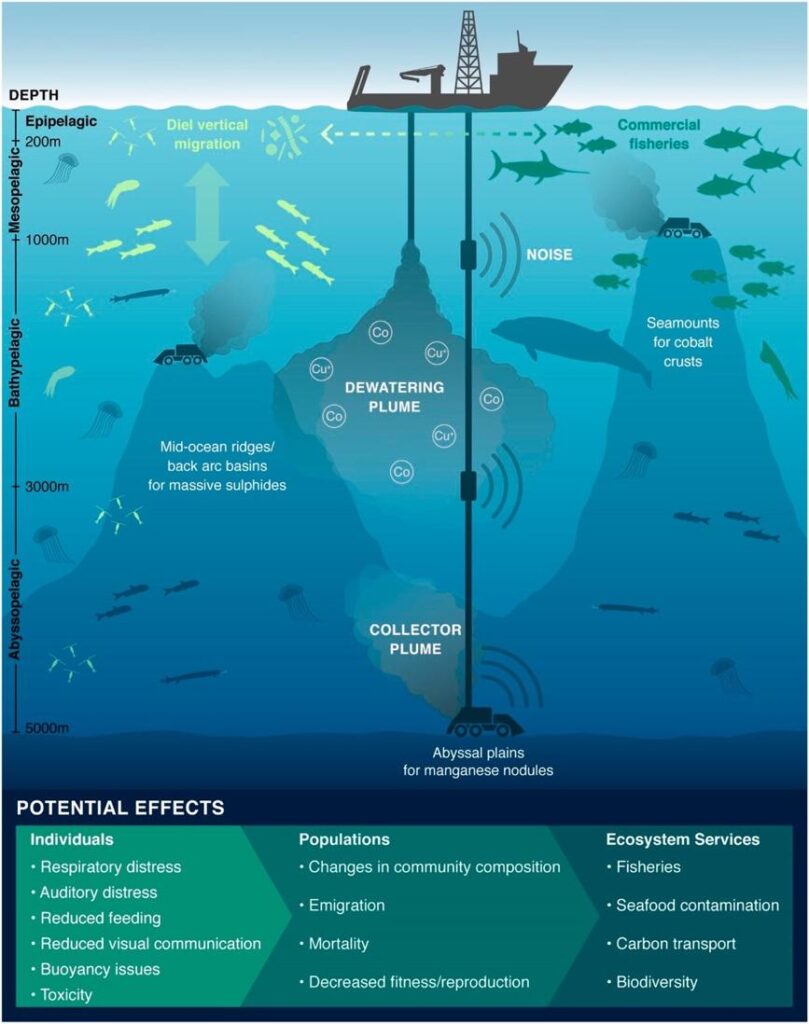
How is Deep Seabed Mining a Threat to the Environment?
Little is known about the habitat and ecosystem of the deep seabed. Thus, before a proper impact assessment can be conducted, there first needs to be a collection of baseline data including a survey and mapping. Even absent this information, the equipment will involve gouging the seabed, causing plumes of sediment in the water column and then resettling in the surrounding area. The scraping of the ocean floor to extract the nodules would destroy deep sea habitats of living marine species and cultural heritage in the area. We do know that deep sea vents contain marine life that may be particularly significant. Some of these species are uniquely adapted to the lack of sunlight and the high pressure of deep water may be very valuable for the research and development of medicines, protective gear, and other important uses. There is simply not enough known about these species, their habitat, and related ecosystems to establish an adequate baseline from which there could be a proper environmental assessment, much less develop measures to protect them and monitor the impact of mining.
The seabed is not the only area of the ocean that will feel the impacts of DSM. Sediment plumes (also known as underwater dust storms), as well as noise and light pollution, will affect much of the water column. Sediment plumes, both from the collector and post-extraction wastewater, could spread 1,400 kilometers in multiple directions. Wastewater containing metals and toxins may affect midwater ecosystems including fisheries and seafood. As noted above, the mining process will return a slurry of sediment, processing agents, and water to the ocean. Very little is known about the effects of this slurry on the environment, including: what metals and processing agents would be mixed in the slurry if the slurry would be toxic, and what would happen to the range of marine animals that could be exposed to the plums.
More research is needed to truly understand the effects of this slurry on the deep sea environment. Additionally, the effects of the collector vehicle are unknown. A simulation of seabed mining was conducted off the coast of Peru in the 1980s and when the site was revisited in 2020, the site showed no evidence of recovery. Thus any disturbance is likely to have long-standing environmental consequences.
There is also Underwater Cultural Heritage (UCH) at risk. Recent studies demonstrate a wide variety of underwater cultural heritage in the Pacific Ocean and within the proposed mining regions, including artifacts and natural environments related to Indigenous cultural heritage, the Manila Galleon trade, and World War II. New developments for seabed mining include the introduction of artificial intelligence used to identify minerals. AI has not yet learned to accurately identify sites of historic and cultural significance which could lead to the destruction of Underwater Cultural Heritage (UCH). This is particularly troubling considering the growing acknowledgment of UCH and Middle Passage and the possibility that UCH sites may be destroyed before they are discovered. Any historical or cultural heritage site caught up in the path of these mining machines wcould similarly be destroyed.
Advocates
A growing number of organizations are currently working to advocate for the protection of the deep seabed.The Deep Sea Conservation Coalition (of which the Ocean Foundation is a member) adopts an overall stance of commitment to the Precautionary Principle and speaks in modulated tones. The Ocean Foundation is a fiscal host of the Deep Sea Mining Campaign (DSMC), a project that focuses on the likely impacts of DSM on marine and coastal ecosystems and communities. Additional discussion of the main players can be found here.
Back to top
2. Where to Start Learning about Deep Seabed Mining (DSM)
The Environmental Justice Foundation. Towards the abyss: How the rush to deep-sea mining threatens people and our planet. (2023). Retrieved March 14, 2023, from https://www.youtube.com/watch?v=QpJL_1EzAts
The Environmental Justice Foundation. (2023, March 7). Towards the abyss: How the rush to deep-sea mining threatens people and our planet. Environmental Justice Foundation. Retrieved March 14, 2023, from https://ejfoundation.org/reports/towards-the-abyss-deep-sea-mining
The technical report from the Environmental Justice Foundation, accompanying the above video, highlights how deep sea mining is posed to damage unique marine ecosystems.
IUCN (2022). Issues Brief: Deep-sea mining. The International Union for Conservation of Nature. https://www.iucn.org/resources/issues-brief/deep-sea-mining
A short report on DSM, the currently proposed methods, regions of exploitation interest as well as a description of three main environmental impacts, including the disturbance of the seafloor, sediment plumes, and pollution. The brief further includes policy recommendations to protect this region, including a moratorium based in the precautionary principle.
Imbler, S., & Corum, J. (2022, August 29). Deep-sea riches: Mining a remote ecosystem. The New York Times. https://www.nytimes.com/interactive/2022/08/
29/world/deep-sea-riches-mining-nodules.html
This interactive article highlights deep sea biodiversity and the expected effects of deep sea mining. It is a wonderful resource to help understand how much of the ocean environment will be affected by deep seabed mining for those new to the subject.
Amon, D.J., Levin, L.A., Metaxas, A., Mudd, G.M., Smith, C.R. (2022, March 18) Heading to the deep end without knowing how to swim: Do we need deep-seabed mining? One Earth. https://doi.org/10.1016/j.oneear.2022.02.013
A commentary from a group of scientists on alternative pathways to address climate change without resorting to DSM. The paper refutes the argument that DSM is needed for the renewable energy transition and batteries, encouraging a transition to a circular economy. Current international law and legal pathways forward are also discussed.
DSM Campaign (2022, October 14). Blue Peril website. Video. https://dsm-campaign.org/blue-peril.
Luick, J. (2022, August). Technical Note: Oceanographic Modelling of Benthic and Midwater Plumes Predicted for Deep Mining Planned by The Metals Company in the Clarion Clipperton Zone of the Pacific Ocean, https://dsm-campaign.org/wp-content/uploads/2022/09/Blue-Peril-Technical-Paper.pdf
A technical note from the Blue Peril Project, accompanying the Blue Peril short film. This note describes the research and modeling used to simulate the mining plumes seen in the Blue Peril film.
GEM. (2021). Pacific Community, Geoscience, Energy and Maritime Division. https://gem.spc.int
The Secretariat of the Pacific Community, Geoscience, Energy, and Maritime Division provides an excellent array of materials that synthesize geological, oceanographic, economic, legal, and ecological aspects of SBM. The papers are the product of a European Union / Pacific Community cooperative enterprise.
Leal Filho, W.; Abubakar, I.R.; Nunes, C.; Platje, J.; Ozuyar, P.G.; Will, M.; Nagy, G.J.; Al-Amin, A.Q.; Hunt, J.D.; Li, C. Deep Seabed Mining: A Note on Some Potentials and Risks to the Sustainable Mineral Extraction from the Oceans. J. Mar. Sci. Eng. 2021, 9, 521. https://doi.org/10.3390/jmse9050521
A comprehensive review of contemporary DSM literature looking at risks, environmental impacts, and legal questions up till the publication of the paper. The paper presents two case studies of the environmental risks and encourages research and attention on sustainable mining.
Miller, K., Thompson, K., Johnson, P. and Santillo, D. (2018, January 10). An Overview of Seabed Mining Including the Current State of Development, Environmental Impacts, and Knowledge Gaps Frontiers in Marine Science. https://doi.org/10.3389/fmars.2017.00418
Since the mid-2010s, there has been a resurgence of interest in seabed mineral resource exploration and extraction. However, many of the regions identified for future seabed mining are already recognized as vulnerable marine ecosystems. Today, some seabed mining operations are already taking place within continental shelf areas of nation-states, generally at relatively shallow depths, and with others at advanced stages of planning. This review covers: the current state of DSM development, possible effects on the environment, and the uncertainties and gaps in scientific knowledge and understanding which render baseline and impact assessments particularly difficult for the deep sea. While the article is now over three years old, it is an important review of historic DSM policies and highlights the modern push for DSM.
IUCN. (2018, July). Issues Brief: Deep-Sea Mining. International Union for Conservation of Nature. PDF. https://www.iucn.org/sites/dev/files/deep-sea_mining_issues_brief.pdf
As the world faces depleting terrestrial deposits of minerals many are looking to the deep sea for new sources. However, the scraping of the sea floor and pollution from mining processes can wipe out entire species and damage the sea floor for decades – if not longer. The factsheet calls for more baseline studies, environmental impact assessments, enhanced regulation, and the development of new technologies that mitigate harm to the environment caused by seabed mining.
Cuyvers, L. Berry, W., Gjerde, K., Thiele, T. and Wilhem, C. (2018). Deep seabed mining: a rising environmental challenge. Gland, Switzerland: IUCN and Gallifrey Foundation. https://doi.org/10.2305/IUCN.CH.2018.16.en. PDF. https://portals.iucn.org/library/sites/library/ files/documents/2018-029-En.pdf
The ocean contains a vast wealth of mineral resources, some in very unique concentrations. Legal constraints in the 1970s and 1980s hindered the development of deep sea mining, but over time many of these legal questions were addressed through the International Seabed Authority allowing for a growing interest in a deep sea mining. The IUCN’s report highlights current discussions surrounding its potential development of the seabed mining industry.
MIDAS. (2016). Managing Impacts of Deep-sea resource exploitation. European Union’s Seventh Framework Programme for research, technological development and demonstration, Grant Agreement No. 603418. MIDAS was coordinated by Seascape Consultants Ltd. http://www.eu-midas.net/
The well-endowed EU-sponsored Managing Impacts of Deep-seA reSource exploitation (MIDAS) Project active from 2013-2016 was a multidisciplinary research programme investigating the environmental impacts of extracting mineral and energy resources from the deep-sea environment. While MIDAS is no longer active their research is very informative.
Center for Biological Diversity. (2013). Deep-Sea Mining FAQ. Center for Biological Diversity.
When the Center for Biological Diversity filed a lawsuit challenging the United State’s permits on exploratory mining they also created a three-page list of frequently asked questions on Deep Sea Mining. Questions include: How much are deep-sea metals worth? (approx. $150 trillion), Is DSM similar to strip mining? (Yes). Isn’t the deep ocean desolate and devoid of life? (No). Please note the answers on the page are far more in-depth and best suited to audiences looking for answers to the complex problems of DSM laid out in a way that is easy to understand without a scientific background. More information on the lawsuit itself can be found here.
Back to top
3. Deep Seabed Mining’s Threats to the Environment
Thompson, K. F., Miller, K. A., Wacker, J., Derville, S., Laing, C., Santillo, D., & Johnston, P. (2023). Urgent assessment needed to evaluate potential impacts on cetaceans from deep seabed mining. Frontiers in Marine Science, 10, 1095930. https://doi.org/10.3389/fmars.2023.1095930
Deep Sea Mining operations could present significant and irreversible risks to the natural environment, particularly to marine mammals. The sounds produced from mining operations, which are planned to continue 24 hours a day at varying depths, overlap with the frequencies that cetaceans communicate. The mining companies plan to operate in the Clarion-Clipperton Zone, which is a habitat for a number of cetaceans including both baleen and toothed whales. More research is needed to determine the effects on marine mammals before any commercial DSM operations begin. The authors note that this is one of the first studies investigating this impact, and encourage the need for more research on DSM noise pollution on whales and other cetaceans.
Hitchin, B., Smith, S., Kröger, K., Jones, D., Jaeckel, A., Mestre, N., Ardron, J., Escobar, E., van der Grient, J., & Amaro, T. (2023). Thresholds in deep-seabed mining: A primer for their development. Marine Policy, 149, 105505. https://doi.org/10.1016/j.marpol.2023.105505
Thresholds will form an inherent part of deep-seabed mining environmental assessment legislation and regulation. A threshold is an amount, level, or limit of a measured indicator, created and used to help avoid unwanted change. In the context of environmental management, a threshold provides a limit that, when reached, suggests that a risk will – or is expected to – become harmful or unsafe, or provides an early warning of such an occurrence. A threshold for DSM should be SMART (Specific, Measurable, Achievable, Relevant, Time-bound), be clearly presented and understandable, allow the detection of change, relate directly to management actions and environmental goals/objectives, incorporate appropriate precaution, provide for compliance/enforcement measures, and be inclusive.
Carreiro-Silva, M., Martins, I., Riou, V., Raimundo, J., Caetano, M., Bettencourt, R., Rakka, M., Cerqueira, T., Godinho, A., Morato, T., & Colaço, A. (2022). Mechanical and toxicological effects of deep-sea mining sediment plumes on a habitat-forming cold-water octocoral. Frontiers in Marine Science, 9, 915650. https://doi.org/10.3389/fmars.2022.915650
A study on the impacts of suspended particulate sediment from DSM on cold water corals, to determine the mechanical and toxicological effects of the sediment. The researchers tested the reaction of the corals to exposure to sulfide particles and quartz. They found that after prolonged exposure, the corals experienced physiological stress and metabolic exhaustion. The sensitivity of the corals to sediments indicates the need for marine protected areas, buffer areas, or designated non-mining regions.
Amon, D.J., Gollner, S., Morato, T., Smith, C.R., Chen, C., Christensen, S., Currie, B., Drazen, J.C., T F, Gianni, M., et al. (2022). Assessment of scientific gaps related to the effective environmental management of deep-seabed mining. Mar. Policy. https://doi.org/10.1016/j.marpol.2022.105006.
In order to understand the deep-sea environment and mining’s effect on life, the authors of this study conducted a review of peer-reviewed literature on DSM. Through a systematic review of over 300 peer-reviewed articles since 2010, researchers rated regions of the seabed on scientific knowledge for evidence-based management, finding that only 1.4% of the regions have enough knowledge for such management. They argue that closing the scientific gaps related to deep-seabed mining is a monumental task that is essential to fulfilling the overarching obligation to prevent serious harm and ensure effective protection and will require clear direction, substantial resources, and robust coordination and collaboration. The authors conclude the article by proposing a high-level road map of activities that involve defining environmental goals, establishing an international reach agenda to generate new data, and synthesize existing data to close key scientific gaps before any exploitation is considered.
van der Grient, J., & Drazen, J. (2022). Evaluating deep-sea communities’ susceptibility to mining plumes using shallow-water data. Science of The Total Environment, 852, 158162. https://doi.org/10.1016/j.scitotenv.2022. 158162.
Deep-sea mining could have large ecosystem impacts on deep-sea communities from collection-vehicle and discharge sediment plumes. Based on studies of shallow-water mining, these suspended sediment concentrations may cause animals to suffocate, damage their gills, change their behaviors, increase mortality, reduce species interactions, and may cause these animals to become contaminated with metals in the deep sea. Because of the low natural suspended sediment concentrations in deep sea environments, very small increases in absolute suspended sediment concentrations could result in acute effects. The authors found that similarity in the type and direction of animal responses to increased suspended sediment concentrations across shallow-water habitats indicates similar responses in underrepresented habitats can be expected, including the deep sea.
R. Williams, C. Erbe, A. Duncan, K. Nielsen, T. Washburn, C. Smith, Noise from deep-sea mining may span vast ocean areas, Science, 377 (2022), https://www.science.org/doi/10.1126/science. abo2804
A scientific inquiry into the impact of noise from deep seabed mining activities on deep sea ecosystems.
DOSI (2022). “What Does the Deep Ocean Do for You?” Deep Ocean Stewardship Initiative Policy Brief. https://www.dosi-project.org/wp-content/uploads/deep-ocean-ecosystem-services- brief.pdf
A short policy brief on the ecosystem services and benefits of a healthy ocean in the context of deep sea ecosystems and anthropogenic impacts on these ecosystems.
Paulus E., (2021). Shedding Light on Deep-Sea Biodiversity—A Highly Vulnerable Habitat in the Face of Anthropogenic Change, Frontiers in Marine Science, https://www.frontiersin.org/articles/10.3389/ fmars.2021.667048
A review of the methodology for determining deep sea biodiversity and how that biodiversity will be affected by anthropogenic interference like deep seabed mining, overfishing, plastic pollution, and climate change.
Miller, KA; Brigden, K; Santillo, D; Currie, D; Johnston, P; Thompson, KF, (2021). Challenging the Need for Deep Seabed Mining From the Perspective of Metal Demand, Biodiversity, Ecosystems Services, and Benefit Sharing, https://doi.org/10.3389/fmars.2021.706161.
Over the last several years, the extraction of minerals from the seabed of the deep oceans is of increasing interest to investors and mining companies. And despite the fact that no commercial-scale deep seabed mining has taken place there is considerable pressure for minerals mining to become an economic reality arguments. The author’s of this paper look at the real needs of deep sea minerals, the risks to biodiversity and ecosystem function and the lack of equitable benefit sharing to the global community now and for future generations.
Muñoz-Royo, C., Peacock, T., Alford, M.H. et al. Extent of impact of deep-sea nodule mining midwater plumes is influenced by sediment loading, turbulence and thresholds. Commun Earth Environ 2, 148 (2021). https://doi.org/10.1038/s43247-021-00213-8
Deep-sea polymetallic nodule mining research activity has substantially increased in recent years, but the expected level of environmental impact is still being established. One environmental concern is the discharge of a sediment plume into the midwater column. We performed a dedicated field study using sediment from the Clarion Clipperton Fracture Zone. The plume was monitored and tracked using both established and novel instrumentation, including acoustic and turbulence measurements. Our field studies reveal that modeling can reliably predict the properties of a midwater plume in the vicinity of the discharge and that sediment aggregation effects are not significant. The plume model is used to drive a numerical simulation of a commercial-scale operation in the Clarion Clipperton Fracture Zone. Key takeaways are that the scale of impact of the plume is notably influenced by the values of environmentally acceptable threshold levels, the quantity of discharged sediment, and the turbulent diffusivity in the Clarion Clipperton Fracture Zone.
Muñoz-Royo, C., Peacock, T., Alford, M.H. et al. Extent of impact of deep-sea nodule mining midwater plumes is influenced by sediment loading, turbulence and thresholds. Commun Earth Environ 2, 148 (2021). https://doi.org/10.1038/s43247-021-00213-8. PDF.
A study on the environmental impact of sediment plumes from deep sea polymetallic nodule mining. Researchers completed a controlled field test to determine how sediment settles and simulated a sediment plume similar to those that would occur during commercial deep sea mining. They confirmed the reliability of their modeling software and modeled a numerical simulation of a mining scale operation.
Hallgren, A.; Hansson, A. Conflicting Narratives of Deep Sea Mining. Sustainability 2021, 13, 5261. https://doi.org/10.3390/su13095261
Four narratives around deep sea mining are reviewed and presented, including: using DSM for a sustainable transition, profit-sharing, research gaps, and leaving the minerals alone. The authors acknowledge that the first narrative is predominant in many DSM conversations and conflicts with other narratives present, including the research gaps and leaving the minerals alone. Leaving the minerals alone is highlighted as an ethical question and one to help increase access to regulatory processes and discussions.
van der Grient, J. M. A., and J. C. Drazen. “Potential Spatial Intersection between High-Seas Fisheries and Deep-Sea Mining in International Waters.” Marine Policy, vol. 129, July 2021, p. 104564. ScienceDirect, https://doi.org/10.1016/j.marpol.2021.104564.
A study reviewing the spatial overlap of DSM contracts with tuna fishery habitats. The study calculates the anticipated negative impact of DSM on fish catch for each RFMO in the regions with DSM contracts. The authors caution that mining plumes and discharge may primarily affect Pacific Island nations.
de Jonge, D. S., Stratmann, T., Lins, L., Vanreusel, A., Purser, A., Marcon, Y., Rodrigues, C. F., Ravara, A., Esquete, P., Cunha, M. R., Simon-Lledó, E., van Breugel, P., Sweetman, A. K., Soetaert, K., & van Oevelen, D. (2020). Abyssal food-web model indicates faunal carbon flow recovery and impaired microbial loop 26 years after a sediment disturbance experiment. Progress in Oceanography, 189, 102446. https://doi.org/10.1016/j.pocean.2020.102446
Due to the predicted future demand for critical metals, abyssal plains covered with polymetallic nodules are currently being prospected for deep-seabed mining. In order to learn more about the effects of deep-seabed mining the authors of this paper looked at the long-term effects of the ‘DISturbance and reCOLonization’ (DISCOL) experiment in the Peru Basin which saw a test of a harrow plough on the sea floor in 1989. The authors then present observations of the benthic food web were made at three distinct sites: inside 26-year old plough tracks (IPT, subjected to direct impact from ploughing), outside the plough tracks (OPT, exposed to settling of resuspended sediment), and at reference sites (REF, no impact). The discovered that both the estimated total system throughput and the microbial loop cycling were significantly reduced (by 16% and 35%, respectively) inside the plough tracks compared to the other two control. The results indicate that food-web functioning, and especially the microbial loop, have not recovered from the disturbance that was inflicted on the abyssal site 26 years ago.
Alberts, E. C. (2020, June 16) “Deep-sea mining: An environmental solution or impending catastrophe?” Mongabay News. Retrieved from: https://news.mongabay.com/2020/06/deep-sea-mining-an-environmental-solution-or-impending-catastrophe/
While deep-sea mining has not started in any part of the world, 16 international mining companies have contracts to explore the seabed for minerals within the Clarion Clipperton Zone (CCZ) in the Eastern Pacific Ocean, and other companies have contracts to explore for nodules in the Indian Ocean and Western Pacific Ocean. A new report by the Deep Sea Mining Campaign and Mining Watch Canada suggests that polymetallic nodule mining would negatively impact ecosystems, biodiversity, fisheries, and the social and economic dimensions of Pacific island nations, and that this mining requires a precautionary approach.
Chin, A., and Hari, K., (2020). Predicting the impacts of mining of deep sea polymetallic nodules in the Pacific Ocean: A review of Scientific literature, Deep Sea Mining Campaign and MiningWatch Canada, 52 pages.
Deep sea mining in the Pacific is of growing interest to investors, mining companies, and some island economies, however, little is known of the true effects of DSM. The report analyses over 250 peer reviewed scientific articles finding that the impacts of mining deep sea polymetallic nodules would be extensive, severe, and last for generations, causing essentially irreversible species loss. The review finds mining the deep sea will have severe and long-lasting effects on the seabeds and may pose significant risks to the marine ecosystem as well as on fisheries, communities, and human health. The relationship of Pacific islanders to the ocean is not well integrated into discussions of DSM and the social and cultural impacts are unknown while the economic benefits remain questionable. This resource is highly recommended for all audiences interested in DSM.
Drazen, J.C., Smith, C.R., Gjerde, K.M., Haddock, S.H.D. et al. (2020) Midwater ecosystems must be considered when evaluating environmental risks of deep-sea mining. PNAS 117, 30, 17455-17460. https://doi.org/10.1073/pnas.2011914117. PDF.
A review of the effects of deep seabed mining on midwater ecosystems. Midwater ecosystems contain 90% of the biosphere and fish stocks for commercial fishing and food security. Potential effects of DSM include sediment plumes and toxic metals entering the food chain in the mesopelagic ocean zone. Researchers recommend improving environmental baseline standards to include midwater ecosystem studies.
Christiansen, B., Denda, A., & Christiansen, S. Potential effects of deep seabed mining on pelagic and benthopelagic biota. Marine Policy 114, 103442 (2020).
Deep seabed mining is likely to affect the pelagic biota, but the severity and scale remain unclear due to lack of knowledge. This study expands beyond the study of benthic communities (macroinvertibrates such as crustaceans) and looks into current knowledge of the pelagic environment (the area between the sea surface and just above the sea floor) noting the harm to creatures that could occur, but cannot be predicted at this time due to a lack of knowledge. This lack of knowledges shows that more information is needed to properly understand the short- and long-term effects of DSM on the ocean environment.
Orcutt, B.N., et al. Impacts of deep-sea mining on microbial ecosystem services. Limnology and Oceanography 65 (2020).
A study on the ecosystem services provided by microbial deep sea communities in the context of deep seabed mining and other anthropogenic interference. The authors discuss the loss of microbial communities at hydrothermal vents, the effects on carbon sequestration abilities of nodule fields, and indicate the need for more research on microbial communities in underwater seamounts. More research is recommended to establish a biogeochemical baseline for the microorganisms prior to introducing deep seabed mining.
B. Gillard et al., Physical and hydrodynamic properties of deep sea mining-generated, abyssal sediment plumes in the Clarion Clipperton Fracture Zone (eastern-central Pacific). Elementa 7, 5 (2019), https://online.ucpress.edu/elementa/article/ doi/10.1525/elementa.343/112485/Physical-and-hydrodynamic-properties-of-deep-sea
A technical study on the anthropogenic impacts of deep seabed mining, using models to analyze sediment plume discharge. Researchers found mining-related scenarios created water-borne sediment forming large aggregations, or clouds, which increased in size with larger plume concentrations. They indicate that the sediment rapidly redeposits locally to the disturbance area unless complicated by ocean currents.
Cornwall, W. (2019). Mountains hidden in the deep sea are biological hot spots. Will mining ruin them? Science. https://www.science.org/content/article/ mountains-hidden-deep-sea-are-biological-hot-spots-will-mining-ruin-them
A brief article on the history and current knowledge of seamounts, one of the three deep sea biological habitats at risk for deep sea mining. Gaps in research on the impacts of mining on seamounts have caused new research proposals and investigation, but the biology of seamounts remains poorly studied. Scientists are working to protect seamounts for research purposes. Fish trawling has already harmed the biodiversity of many shallow seamounts by removing corals, and mining equipment is expected to worsen the problem.
The Pew Charitable Trusts (2019). Deep-Sea Mining on Hydrothermal Vents Threatens Biodiversity. The Pew Charitable Trusts. PDF.
A fact sheet detailing the effects of deep sea mining on hydrothermal vents, one of the three underwater biological habitats threatened by commercial deep sea mining. Scientists report mining active vents will threaten rare biodiversity and potentially affect neighboring ecosystems. Suggested next steps for protecting hydrothermal vents include determining criteria for active and inactive vent systems, ensure transparency of scientific information for ISA decision makers and put in place ISA management systems for active hydrothermal vents.
For more general information on DSM, Pew has a curated website of additional fact sheets, overview of regulations, and additional articles which may be helpful for those new to DSM and the general public as a whole: https://www.pewtrusts.org/en/projects/seabed-mining-project.
D. Aleynik, M. E. Inall, A. Dale, A. Vink, Impact of remotely generated eddies on plume dispersion at abyssal mining sites in the Pacific. Sci. Rep. 7, 16959 (2017) https://www.nature.com/articles/s41598-017-16912-2
An analysis of the impact of ocean counter currents (eddies) on the potential dispersion of mining plumes and subsequent sediment. Current variability is dependent on a variety of factors including tides, surface winds, and eddies. Increased flow from eddy currents are found to spread and disperse water, and potentially water borne sediment, quickly over large distances.
J. C. Drazen, T. T. Sutton, Dining in the deep: The feeding ecology of deep-sea fishes. Annu. Rev. Mar. Sci. 9, 337–366 (2017) doi: 10.1146/annurev-marine-010816-060543
A study on the spatial connectivity of the deep ocean via the feeding habits of deep-sea fish. In the “Anthropogenic Effects” section of the paper, the authors discuss the potential impacts deep seabed mining may have on deep sea fish due to the unknown spatial relativity of DSM activities.
Deep Sea Mining Campaign. (2015, September 29). World’s first deep sea mining proposal ignores consequences of its impacts on oceans. Media Release. Deep Sea Mining Campaign, Economist at Large, MiningWatch Canada, EarthWorks, Oasis Earth. PDF.
As the deep sea mining industry chases investors at the Asia Pacific Deep Sea Mining Summit, a new critique by the Deep Sea Mining Campaign reveals indefensible flaws in the Environmental and Social Benchmarking Analysis of the Solwara 1 project commissioned by Nautilus Minerals. Find the full report here.
Back to top
4. International Seabed Authority Considerations
International Seabed Authority. (2022). About ISA. International Seabed Authority. https://www.isa.org.jm/
The International Seabed Authority, the foremost authority on the seabed worldwide was established by the United Nations under the 1982 United Nations Convention on the Law of the Sea (UNCLOS) and the amendment in the form of the 1994 Agreement of UNCLOS. As of 2020, the ISA has 168 member states (including the European Union) and covers 54% of the ocean. The ISA is mandated to ensure the effective protection of the marine environment from harmful effects that may arise from seabed-related activities. The International Seabed Authority website is indispensable for both official documents and the scientific papers and workshop discussions that wield a strong influence on ISA decision-making.
Morgera, E., & Lily, H. (2022). Public participation at the International Seabed Authority: An international human rights law analysis. Review of European, Comparative & International Environmental Law, 31(3), 374–388. https://doi.org/10.1111/reel.12472
A legal analysis on human rights at the negotiations toward deep seabed mining regulation at the International Seabed Authority. The article notes a lack of public participation and argues that the organization has overlooked human rights obligations of procedure within the ISA meetings. The authors recommend a series of steps to enhance and encourage public participation in decision making.
Woody, T., & Halper, E. (2022, April 19). A race to the bottom: In the rush to mine the ocean floor for minerals used in EV batteries, who is looking out for the environment? Los Angeles Times. https://www.latimes.com/politics/story/2022-04-19/gold-rush-in-the-deep-sea-raises-questions-about-international-seabed-authority
An article highlighting the involvement of Michael Lodge, the secretary-general of the International Seabed Authority, with The Metals Company, one of the companies interested in mining the deep seabed.
Statements provided by attorney for International Seabed Authority. (2022, April 19). Los Angeles Times. https://www.latimes.com/environment/story/ 2022-04-19/statements-provided-by-attorney-for-international-seabed-authority
A collection of responses by an attorney connected with the ISA on topics including: the autonomy of the ISA as an organization outside the UN, the appearance of Michael Lodge, secretary-general of the ISA in a promotional video for The Metals Company (TMC), and on concerns by scientists that the ISA cannot regulate and participate in mining.
In 2022, the NY Times published a series of articles, documents, and a podcast on the relationship between The Metals Company, one of the forerunners pushing for deep seabed mining, and Michael Lodge, the current secretary-general of the International Seabed Authority. The following citations contain the investigation of the New York Times into deep seabed mining, the main players pushing for the ability to mine, and the questionable relationship between the TMC and the ISA.
Lipton, E. (2022, August 29). Secret data, tiny islands and a quest for treasure on the ocean floor. The New York Times. https://www.nytimes.com/2022/08/29/world/ deep-sea-mining.html
A deep dive exposé into the companies spearheading deep seabed mining efforts including The Metals Company (TMC). The years-long close relationship of TMC with Michael Lodge and the International Seabed Authority is discussed as well as equity concerns about the beneficiaries of such activities if mining were to occur. The article investigates questions about how a Canadian based company, TMC, became a front runner in DSM conversations when the mining was originally proposed to offer financial assistance to poor Pacific Island nations.
Lipton, E. (2022, August 29). An investigation leads to the bottom of the Pacific. The New York Times. https://www.nytimes.com/2022/08/29/insider/ mining-investigation.html
Part of the NY Times “Race to the Future” series, this article further examines the relationship between The Metals Company and officials within the International Seabed Authority. The article details conversations and interactions between the investigative journalist and high level officials at TMC and the ISA, exploring and asking questions about the environmental impact of DSM.
Kitroeff, N., Reid, W., Johnson, M. S., Bonja, R., Baylen, L. O., Chow, L., Powell, D., & Wood, C. (2022, September 16). Promise and peril at the bottom of the sea. The New York Times. https://www.nytimes.com/2022/09/16/ podcasts/the-daily/electric-cars-sea-mining-pacific-ocean.html
A 35-minute podcast interviewing Eric Lipton, a NY Times investigative journalist who has been following the relationship between The Metals Company and the International Seabed Authority.
Lipton, E. (2022) Seabed Mining Selected Documents. https://www.documentcloud.org/documents/ 22266044-seabed-mining-selected-documents-2022
A series of documents preserved by the NY Times documenting the early interactions between Michael Lodge, current ISA secretary-general, and Nautilus Minerals, a company that has been obtained by TMC starting in 1999.
Ardron J. A., Ruhl H. A., Jones D. O. (2018). Incorporating transparency into the governance of deep-seabed mining in the area beyond national jurisdiction. Mar. Pol. 89, 58–66. doi: 10.1016/j.marpol.2017.11.021
A 2018 analysis of the International Seabed Authority found that more transparency is needed to improve accountability, especially regarding: access to information, reporting, public participation, quality assurance, compliance information and accrediation, and ability to review and appearl decisions.
Lodge, M. (2017, May 26). The International Seabed Authority and Deep Seabed Mining. UN Chronicle, Volume 54, Issue 2, pp. 44 – 46. https://doi.org/10.18356/ea0e574d-en https://www.un-ilibrary.org/content/journals/15643913/54/2/25
The sea floor, like the terrestrial world, is made up of unique geographical features and the home to large deposits of minerals, often in enriched forms. This short and accessible report covers the basics of seabed mining from the viewpoint of the United Nations Convention on the Law of the Sea (UNCLOS) and the formation of regulatory regimes for the exploitation of these mineral resources.
International Seabed Authority. (2011, July 13). Environmental management plan for the Clarion-Clipperton Zone, adopted July 2012. International Seabed Authority. PDF.
With the legal authority granted by the United Nations Convention on the Law of the Sea, the ISA set forth the environmental management plan for the Clarion-Clipperton Zone, the area in which most deep seabed mining will likely take place and where the majority of permits for DSM have been issued. The document is to govern manganese nodule prospecting in the Pacific.
International Seabed Authority. (2007, July 19). Decision of the Assembly relating to the regulations on prospecting and exploration for polymetallic nodules in the Area. International Seabed Authority, Resumed Thirteenth Session, Kingston, Jamaica, 9-20 July ISBA/13/19.
On July 19th, 2007 the International Seabed Authority (ISA) made progress on sulphide regulations. This document is important in that it amends the title and provisions of regulation 37 so that the regulations for exploration now include objects and sites of archaeological or historical in nature. The document further discusses various countries’ positions which includes opinions on the various historic sites such as the slave trade and required reporting.
Back to top
5. Deep Seabed Mining and Diversity, Equity, Inclusion, and Justice
Tilot, V., Willaert, K., Guilloux, B., Chen, W., Mulalap, C. Y., Gaulme, F., Bambridge, T., Peters, K., and Dahl, A. (2021). ‘Traditional Dimensions of Seabed Resource Management in the Context of Deep Sea Mining in the Pacific: Learning From the Socio-Ecological Interconnectivity Between Island Communities and the Ocean Realm’, Front. Mar, Sci. 8: https://www.frontiersin.org/articles/10.3389/ fmars.2021.637938/full
A scientific review of the marine habitats and known intangible underwater cultural heritage in the Pacific Islands expected to be impacted by DSM. This review is accompanied by a legal analysis of current legal frameworks to determine best practices for preserving and protecting the ecosystems from DSM impacts.
Bourrel, M., Thiele, T., Currie, D. (2018). The common of heritage of mankind as a means to assess and advance equity in deep sea mining. Marine Policy, 95, 311-316. https://doi.org/10.1016/j.marpol.2016.07.017. PDF.
Considering the common heritage of mankind principle within its context and uses in UNCLOS and the ISA. Authors identify legal regimes and the legal status of the common heritage of mankind as well as how it is used practically at the ISA. The authors recommend a series of action steps to be implemented at all levels of the law of the sea to promote equity, justice, precaution, and recognition of future generations.
Jaeckel, A., Ardron, J.A., Gjerde, K.M. (2016) Sharing benefits of the common heritage of mankind – Is the deep seabed mining regime ready? Marine Policy, 70, 198-204. https://doi.org/10.1016/j.marpol.2016.03.009. PDF.
Through the lens of the common heritage of mankind, the researchers identify areas of improvement for the ISA and regulation with respect to the common heritage of mankind. These areas include transparency, financial benefits, the Enterprise, technology transfer and capacity building, inter-generational equity, and marine genetic resources.
Rosembaum, Helen. (2011, October). Out of Our Depth: Mining the Ocean Floor in Papua New Guinea. Mining Watch Canada. PDF.
The report details serious environmental and social impacts expected as a result of unprecedented mining of the ocean floor in Papua New Guinea. It highlights the deep flaws in Nautilus Minerals EIS like the insufficient testing by the company in the toxicity of its process on vent species, and has not sufficiently considered toxic effects on organisms in the marine food chain.
Cuyvers, L. Berry, W., Gjerde, K., Thiele, T. and Wilhem, C. (2018). Deep seabed mining: a rising environmental challenge. Gland, Switzerland: IUCN and Gallifrey Foundation. https://doi.org/10.2305/IUCN.CH.2018.16.en. PDF. https://portals.iucn.org/library/sites/library/ files/documents/2018-029-En.pdf
The ocean contains a vast wealth of mineral resources, some in very unique concentrations. Legal constraints in the 1970s and 1980s hindered the development of deep sea mining, but over time many of these legal questions were addressed through the International Seabed Authority allowing for a growing interest in a deep sea mining. The IUCN’s report highlights current discussions surrounding its potential development of the seabed mining industry.
Back to top
6. Technology and Minerals Market Considerations
Blue Climate Initiative. (October 2023). Next Generation EV Batteries Eliminate the Need for Deep Sea Mining. Blue Climate Initiative. Retrieved October 30, 2023
https://www.blueclimateinitiative.org/sites/default/files/2023-10/whitepaper.pdf
Advances in electric vehicle (EV) battery technology, and the accelerating adoption of these technologies, are leading to the replacement of EV batteries dependent on cobalt, nickel, and manganese. As a result, the deep sea mining of these metals is neither necessary, economically advantageous, or environmentally advisable.
Moana Simas, Fabian Aponte, and Kirsten Wiebe (SINTEF Industry), Circular Economy and Critical Minerals for the Green Transition, pp. 4-5. https://wwfint.awsassets.panda.org/ downloads/the_future_is_circular___sintef mineralsfinalreport_nov_2022__1__1.pdf
A November 2022 study found that “the adoption of different chemistries for electric vehicle batteries and moving away from lithium-ion batteries for stationary applications could reduce the total demand for cobalt, nickel, and manganese by 40-50% of cumulative demand between 2022 and 2050 compared to current technologies and business-as-usual scenarios.
Dunn, J., Kendall, A., Slattery, M. (2022) Electric vehicle lithium-ion battery recycled content standards for the US – targets, costs, and environmental impacts. Resources, Conservation and Recycling 185, 106488. https://doi.org/10.1016/j.resconrec.2022. 106488.
One argument for DSM is to enhance the transition into a green, x loop recycling system.
Miller, KA; Brigden, K; Santillo, D; Currie, D; Johnston, P; Thompson, KF, Challenging the Need for Deep Seabed Mining From the Perspective of Metal Demand, Biodiversity, Ecosystems Services, and Benefit Sharing, https://doi.org/10.3389/fmars.2021.706161
This article explores the considerable uncertainties that exist in relation to deep seabed mining. In particular, we provide a perspective on: (1) arguments that deep seabed mining is needed to supply minerals for the green energy revolution, using the electric vehicle battery industry as an illustration; (2) risks to biodiversity, ecosystem function and related ecosystem services; and (3) the lack of equitable benefit sharing to the global community now and for future generations.
Deep Sea Mining Campaign (2021) Shareholder Advisory: The proposed business combination between Sustainable Opportunities Acquisition Corporation and DeepGreen. (http://www.deepseaminingoutofourdepth.org/ wp-content/uploads/Advice-to-SOAC-Investors.pdf)
The formation of The Metals Company brought the attention of the Deep Sea Mining Campaign and other organizations like The Ocean Foundation, resulting in this shareholder advisory about the new company forming from the Sustainable Opportunities Acquisition Corporation and DeepGreen merger. The report discusses the unsustainability of DSM, the speculative nature of mining, liabilities, and risks associated with the merger and acquisition.
Yu, H. and Leadbetter, J. (2020, July 16) Bacterial Chemolihoautotrophy via Manganese Oxidation. Nature. DOI: 10.1038/s41586-020-2468-5 https://scitechdaily.com/microbiologists-discover-bacteria-that-feed-on-metal-ending-a-century-long-search/
New evidence suggests that bacteria that consume metal and the excrement of this bacteria may provide one explanation for the large number of mineral deposits on the sea floor. The article argues that more studies need to be completed before the seabed is mined.
European Union (2020) Circular Economy Action Plan: For a cleaner and more competitive Europe. European Union. https://ec.europa.eu/environment/pdf/circular-economy/new_circular_economy_action_plan. pdf
The European Union has been making strides toward implementing a circular economy. This report provides a progress report and ideas to create a sustainable product policy framework, emphasize key product value chains, use less waste and increase value, and increase the applicability of a circular economy for all.
Back to top
7. Financing, ESG Considerations, and Greenwashing Concerns
Planet Tracker (2024): How to Lose Half a Trillion: Deep Sea Mining to Destroy At Least Half a Trillion Dollars in Corporate Value and Natural Capital. https://planet-tracker.org/wp-content/uploads/2024/02/How-to-Lose-Half-a-Trillion.pdf
Betting on resource extraction over nature preservation is a financial mistake, according to Planet Tracker’s latest report, which finds that sectors dependent on intact ecosystems have outperformed those dependent on nature exploitation by threefold in terms of financial returns over the last three decades. The analysis finds that chasing this ecological disaster could cause over USD 500 billion in value destruction, of which USD 30-132 billion is in the mining sector itself, mainly since deep sea mining would generate negative returns. Moreover, the negative impact on the deep sea’s ecosystem services could lead to natural capital destruction of at least USD 465 billion, predominantly through habitat destruction. Financial market participants have the power to prevent this potential loss by endorsing a moratorium on deep-sea mining.
United Nations Environment Programme Finance Initiative (2022) Harmful Marine Extractives: Understanding the risks & impacts of financing non-renewable extractive industries. Geneva. https://www.unepfi.org/wordpress/wp-content/uploads/2022/05/Harmful-Marine-Extractives-Deep-Sea-Mining.pdf
The United Nations Environmental Programme (UNEP) released this report targeted toward audiences in the financial sector, like banks, insurers, and investors, on the financial, biological, and other risks of deep seabed mining. The report is anticipated to be used as a resource for financial institutions to make decisions on deep seabed mining investments. It concludes by indicating that DSM is not aligned and cannot be aligned with the definition of a sustainable blue economy.
WWF (2022). Deep Seabed Mining: WWF’s guide for financial institutions. https://wwfint.awsassets.panda.org/downloads/ wwf_briefing_financial_institutions_dsm.pdf
Created by the World Wide Fund for Nature (WWF), this brief memo outlines the risk presented by DSM and encourages financial institutions to consider and implement policies to reduce investment risk. The report suggests financial institutions should publicly commit to not invest in DSM mining companies, engage with the sector, investors, and non mining companies that may express desire to use the minerals to prevent DSM. The report further lists companies, international organizations, and financial institutions that, as of the report, have signed a moratorium and/or created policy to exclude DSM from their portfolios.
United Nations Environment Programme Finance Initiative (2022) Harmful Marine Extractives: Understanding the risks & impacts of financing non-renewable extractive industries. Geneva. https://www.unepfi.org/publications/harmful-marine-extractives-deep-sea-mining/;/;
An analysis of the social and environmental impacts for investment and financing institutions and the risk DSM poses to investors. The brief focuses on the potential development, operation, and closure of DSM and concludes with recommendations for a transition to a more sustainable alternative, arguing that there can be no method of precautionarily establishing this industry due to a deficit in scientific certainty.
Bonitas Research, (2021, October 6) TMC the metals co. https://www.bonitasresearch.com/wp-content/uploads/dlm_uploads/2021/10/ BonitasResearch-Short-TMCthemetalsco-Nasdaq-TMC-Oct-6-2021.pdf?nocookies=yes
An investigation into The Metals Company and its dealings pre and post entering the stock market as a public company. The document suggests TMC provided overpayment to undisclosed insiders for Tonga Offshore Mining Limited (TOML), an artificial inflation of exploration expenses, operating with a questionable legal license for TOML.
Bryant, C. (2021, September 13). $500 Million of SPAC Cash Vanishes Under the Sea. Bloomberg. https://www.bloomberg.com/opinion/articles/ 2021-09-13/tmc-500-million-cash-shortfall-is-tale-of-spac-disappointment-greenwashing?leadSource=uverify%20wall
Following the stock market debut of the DeepGreen and Sustainable Opportunities Acquisition merger, creating the publicly traded The Metals Company, the company experienced early concern from investors who withdrew their financial support.
Scales, H., Steeds, O. (2021, June 1). Catch Our Drift Episode 10: Deep sea mining. Nekton Mission Podcast. https://catchourdrift.org/episode10 deepseamining/
A 50 minute podcast episode with special guests Dr. Diva Amon to discuss the environmental implications of deep seabed mining, as well as Gerrard Barron, Chairman and CEO of The Metals Company.
Singh, P. (2021, May).Deep Seabed Mining and Sustainable Development Goal 14, W. Leal Filho et al. (eds.), Life Below Water, Encyclopedia of the UN Sustainable Development Goals https://doi.org/10.1007/978-3-319-71064-8_135-1
A review on the intersection of deep seabed mining with Sustainable Development Goal 14, Life Below Water. The author indicates a need to reconcile DSM with the UN Sustainable Development Goals, particularly Goal 14, sharing that “deep seabed mining might end up further exacerbating terrestrial mining activities, resulting in deleterious consequences occurring simultaneously on land and at sea.” (page 10).
BBVA (2020) Environmental and Social Framework. https://shareholdersandinvestors.bbva.com/wp-content/uploads/2021/01/Environmental-and-Social-Framework-_-Dec.2020-140121.pdf.
BBVA’s Environmental and Social Framework aims to share standards and guidelines for investment within the mining, agribusiness, energy, infrastructure, and defense sectors with clients participating in the BBVA banking and investment system. Among prohibited mining projects, BBVA lists seabed mining, indicating a general unwillingness to financially sponsor clients or projects interested in DSM.
Levin, L.A., Amon, D.J., and Lily, H. (2020)., Challenges to the sustainability of deep seabed mining. Nat. Sustain. 3, 784–794. https://doi.org/10.1038/s41893-020-0558-x
A review of current research on deep seabed mining in the context of sustainable development. The authors discuss motivations for deep seabed mining, sustainability implications, legal concerns and considerations, as well as ethics. The article ends with the authors in support of a circular economy to avoid deep seabed mining.
Back to top
8. Liability and Compensation Considerations
Proelss, A., Steenkamp, R.C. (2023). Liability Under Part XI UNCLOS (Deep Seabed Mining). In: Gailhofer, P., Krebs, D., Proelss, A., Schmalenbach, K., Verheyen, R. (eds) Corporate Liability for Transboundary Environmental Harm. Springer, Cham. https://doi.org/10.1007/978-3-031-13264-3_13
A November 2022 book chapter which found that, “[g]aps in current domestic legislation may entail non-compliance with [UNCLOS] Article 235, which entails a failure of a State’s due diligence obligations and has the potential to expose States to liability.” This is relevant because it has previously been asserted that simply creating a domestic law to govern DSM in the Area could protect sponsoring states.
Further recommendations include the article Responsibility and Liability for Damage Arising Out of Activities in the Area: Attribution of Liabilty, also by Tara Davenport: https://www.cigionline.org/publications/ responsibility-and-liability-damage-arising-out-activities-area-attribution-liability/
Craik, N. (2023). Determining the Standard for Liability for Environmental Harm from Deep Seabed Mining Activities, p. 5 https://www.cigionline.org/publications/ determining-standard-liability-environmental-harm-deep-seabed-mining-activities/
The Liability Issues for Deep Seabed Mining project was developed by the Centre for International Governance Innovation (CIGI), the Commonwealth Secretariat and the Secretariat of the International Seabed Authority (ISA) to assist in clarifying legal issues of responsibility and liability underpinning the development of exploitation regulations for the deep seabed. CIGI, in collaboration with the ISA Secretariat and the Commonwealth Secretariat, in 2017, invited leading legal experts to form the Legal Working Group on Liability for Environmental Harm from Activities in the Area (LWG) to discuss liability related to environmental damage, with the goal of providing the Legal and Technical Commission, as well as members of the ISA with an in-depth examination of potential legal issues and avenues.
Mackenzie, R. (2019, February 28). Legal Liability for Environmental Harm from Deep Seabed Mining Activities: Defining Enviornmental Damage. CIGI. https://www.cigionline.org/series/liability-issues-deep-seabed-mining-series/
The Liability Issues for Deep Seabed Mining contains a synthesis and overview, as well as seven deep-dive topic analyses. The project was developed by the Centre for International Governance Innovation (CIGI), the Commonwealth Secretariat and the Secretariat of the International Seabed Authority (ISA) to assist in clarifying legal issues of responsibility and liability underpinning the development of exploitation regulations for the deep seabed. CIGI, in collaboration with the ISA Secretariat and the Commonwealth Secretariat, in 2017, invited leading legal experts to form the Legal Working Group on Liability for Environmental Harm from Activities in the Area to discuss liability related to environmental damage, with the goal of providing the Legal and Technical Commission, as well as members of the ISA with an in-depth examination of potential legal issues and avenues.”)
For more information on Liability Issues related to Deep Seabed Mining, please see the Centre for International Governance Innovation’s (CIGI) series titled: Liability Issues for Deep Seabed Mining Series, which can be accessed at: https://www.cigionline.org/series/liability-issues-deep-seabed-mining-series/
Davenport, T. (2019, February 7). Responsibility and Liability for Damage Arising Out of Activities in the Area: Potential Cliamants and Possible Fora. CIGI. https://www.cigionline.org/series/liability-issues-deep-seabed-mining-series/
This paper explores the various issues related to identifying claimants that have a sufficient legal interest to bring a claim for damage arising out of activities in the area beyond national jurisdiction (standing) and whether such claimants have access to a dispute settlement forum to adjudicate such claims, be it an international court, tribunal or national courts (access). The paper argues that the major challenge in the context of deep seabed mining is that damage can impact both individual and collective interests of the international community, making the determination of which actor has standing a complex task.
Seabed Disputes Chamber of the ITLOS, Responsibilities and Obligations of States Sponsoring Persons and Entities with Respect to Activities in the Area (2011), Advisory Opinion, No 17 (SDC Advisory Opinion 2011) https://www.itlos.org/fileadmin/itlos/documents /cases/case_no_17/17_adv_op_010211_en.pdf
An oft-cited and historic unanimous opinion from the International Tribunal for the Law of the Sea’s Seabed Disputes Chamber, outlining the rights and responsibilities for sponsoring states. This opinion the highest standards of due diligence including a legal obligation to apply precaution, best environmental practices, and EIA. Importantly, it rules that developing countries have the same obligations regarding environmental protection as developed countries to avoid forum shopping or “flag of convenience” situations.
Back to top
9. Seabed Mining and Underwater Cultural Heritage
Utilizing a biocultural lens to build pilina (Relationships) to the kai lipo (Deep sea ecosystems) | Office of National Marine Sanctuaries. (2022). Retrieved March 13, 2023, from https://sanctuaries.noaa.gov/education/ teachers/utilizing-a-biocultural-lens-to-build-to-the-kai-lipo.html
A webinar by Hōkūokahalelani Pihana, Kainalu Steward, and J. Hauʻoli Lorenzo-Elarco as part of the US National Marine Sanctuary Foundation series at the Papahānaumokuākea Marine National Monument. The series aims to highlight the need to increase Indigenous participation in ocean sciences, STEAM (Science, Technology, Engineering, Art, and Math), and careers in these fields. The speakers discuss an ocean mapping and exploration project within the Monument and Johnston Atoll where native Hawaiians participated as interns.
Tilot, V., Willaert, K., Guilloux, B., Chen, W., Mulalap, C. Y., Gaulme, F., Bambridge, T., Peters, K., and Dahl, A. (2021). ‘Traditional Dimensions of Seabed Resource Management in the Context of Deep Sea Mining in the Pacific: Learning From the Socio-Ecological Interconnectivity Between Island Communities and the Ocean Realm’, Front. Mar, Sci. 8: https://www.frontiersin.org/articles/10.3389/ fmars.2021.637938/full
A scientific review of the marine habitats and known intangible underwater cultural heritage in the Pacific Islands expected to be impacted by DSM. This review is accompanied by a legal analysis of current legal frameworks to determine best practices for preserving and protecting the ecosystems from DSM impacts.
Jeffery, B., McKinnon, J. F. and Van Tilburg, H. (2021). Underwater cultural heritage in the Pacific: Themes and future directions. International Journal of Asia Pacific Studies 17 (2): 135–168: https://doi.org/10.21315/ijaps2021.17.2.6
This article identifies the underwater cultural heritage located within the Pacific Ocean in the categories of Indigenous cultural heritage, the Manila Galleon trade, as well as artifacts from World War II. A discussion of these three categories reveals the wide temporal and spatial variety of UCH in the Pacific Ocean.
Turner, P. J., Cannon, S., DeLand, S., Delgado, J. P., Eltis, D., Halpin, P. N., Kanu, M. I., Sussman, C. S., Varmer, O., & Van Dover, C. L. (2020). Memorializing the Middle Passage on the Atlantic seabed in Areas Beyond National Jurisdiction. Marine Policy, 122, 104254. https://doi.org/10.1016/j.marpol.2020.104254
In supporting the recognition and justice for the International Decade for People of African Descent (2015–2024), researchers are seeking ways to memorialize and honor those who experienced one of the 40,000 voyages from Africa to the Americas as slaves. Exploration for mineral resources on the international seabed (the “Area”) in the Atlantic Basin is already underway, governed by the International Seabed Authority (ISA). Through the United Nations Convention on the Law of the Sea (UNCLOS), Member States of the ISA have a duty to protect objects of an archeological and historical nature found in the Area. Such objects may be important examples of underwater cultural heritage and can be tied to intangible cultural heritage, as evidenced through links with religion, cultural traditions, art and literature. Contemporary poetry, music, art, and literature convey the significance of the Atlantic seabed in African diasporic cultural memory, but this cultural heritage has yet to be formally recognized by the ISA. The authors propose a memorialization of the routes the ships took as world cultural heritage. These routes pass over regions of the Atlantic Ocean seabed where there is interest in deep seabed mining. The authors recommend recognizing the Middle Passage prior to allowing DSM and mineral exploitation to occur.
Evans, A and Keith, M. (2011, December). The Consideration of Archaeological Sites in Oil and Gas Drilling Operations. http://www.unesco.org/new/fileadmin/ MULTIMEDIA/HQ/CLT/pdf/Amanda%20M. %20Evans_Paper_01.pdf
In the United States, Gulf of Mexico, oil and gas industry operators are required by the Bureau of Ocean Energy Management to provide archaeological assessments of potential resources in their project area as a condition of the permit application process. While this document focuses on oil and gas exploration, the document could serve as a framework for permits.
Bingham, B., Foley, B., Singh, H., and Camilli, R. (2010, November). Robotic Tools for Deep Water Archaeology: Surveying an Ancient Shipwreck with an Autonomous Underwater Vehicle. Journal of Field Robotics DOI: 10.1002/rob.20359. PDF.
The use of autonomous underwater vehicles (AUV) are a key technology used to identify and study underwater cultural heritage sites as is successfully shown by the survey of the Chios site in the Aegean Sea. This shows the capacity for AUV technology to be applied to surveys conducted by DSM companies to help identify historically and culturally significant sites. However, if this technology is not applied to the field of DSM then there is strong potential for these sites to be destroyed before they are ever discovered.
Back to top
10. Social License (Moratorium Calls, Governmental Prohibition, and Indigenous Commentary)
Kaikkonen, L., & Virtanen, E. A. (2022). Shallow-water mining undermines global sustainability goals. Trends in Ecology & Evolution, 37(11), 931-934. https://doi.org/10.1016/j.tree.2022.08.001
Coastal mineral resources are promoted as a sustainable option to meet increasing metal demands. However, shallow-water mining contradicts international conservation and sustainability goals and its regulative legislation is still being developed. While this article deals with shallow-water mining, the argument that there are no justifications in favor of shallow-water mining can be applied to the deep sea, especially in regard to a lack of comparisons to different mining practices.
Hamley, G. J. (2022). The implications of seabed mining in the Area for the human right to health. Review of European, Comparative & International Environmental Law, 31(3), 389–398. https://doi.org/10.1111/reel.12471
This legal analysis presents the need to consider human health in conversations surrounding deep seabed mining. The author notes that most of the conversation in DSM has focused on the financial and environmental implications of the practice, but that human health has been noticeably absent. As argued in the paper, “the human right to health, is dependent on marine biodiversity. On this basis, States are subject to a package of obligations under the right to health concerning the protection of marine biodiversity… Analysis of the draft regime for the exploitation phase of seabed mining suggests that, thus far, States have failed to discharge their responsibilities under the right to health.” The author provides recommendations for ways to incorporate human health and human rights into conversations around deep seabed mining at the ISA.
Deep Sea Conservation Coalition. (2020). Deep-sea Mining: the Science and Potential Impacts Factsheet 2. Deep Sea Conservation Coalition. http://www.deepseaminingoutofourdepth.org/ wp-content/uploads/02_DSCC_FactSheet2_DSM_ science_4pp_web.pdf
A moratorium on deep-sea mining is essential given the concerns about the vulnerability of deep-sea ecosystems, a lack of information on long-term effects, and the scale of mining activities in the deep-sea. The four page factsheet covers the environmental threats of deep-sea mining on abyssal plains, seamounts, and hydrothermal vents.
Mengerink, K.J., et al., (2014, May 16). A Call for Deep-Ocean Stewardship. Policy Forum, Oceans. AAAS. Science, Vol. 344. PDF.
The deep ocean is already threatened from a number of anthropogenic activities and seabed mining is another significant threat that can be stopped. Thus a collective of by leading marine scientists have made a public pronouncement to call for deep-ocean stewardship.
Levin, L.A., Amon, D.J., and Lily, H. (2020)., Challenges to the sustainability of deep seabed mining. Nat. Sustain. 3, 784–794. https://doi.org/10.1038/s41893-020-0558-x
The Ocean Foundation recommends reviewing current legislation bills, including the California Seabed Mining Prevention Act, Washington’s Concerning the prevention of seabed mining of hard minerals, and Oregon’s Prohibited contracts for exploration for hard minerals. These may help guide others in enacting legislation to limit the damage caused by seabed mining highlighting the key points that seabed mining is not aligned with public interest.
- California – https://leginfo.legislature.ca.gov/faces/ billCompareClient.xhtml?bill_id=202120220AB1832& showamends=false
- Washington – https://app.leg.wa.gov/billsummary?BillNumber=5145&Initiative=false &Year=2021
- Oregon – https://oregon.public.law/statutes/ors_ 274.610
Deepsea Conservation Coalition. (2022). Resistance to Deep-Sea Mining: Governments and Parliamentarians. https://www.savethehighseas.org/voices-calling-for-a-moratorium-governments-and-parliamentarians/
As of December 2022, 12 states have taken a stance against Deep Seabed Mining. Four states have formed an alliance to support a DSM moratorium (Palau, Fiji, Federated States of Micronesia, and Samoa, two states have stated support for the moratorium (New Zealand and The French Polynesian assembly. Six states have supported a pause (Germany, Costa Rica, Chile, Spain, Panama, and Ecuador), while France has advocated for a ban.
Deepsea Conservation Coalition. (2022). Resistance to Deep-Sea Mining: Governments and Parliamentarians. https://www.savethehighseas.org/voices-calling-for-a-moratorium-fishing-sector/
The Deepsea Conservation Coalition has compiled a list of groups in the fishing industry calling for a moratorium on DSM. These include: the African Confederation of Professional Artisanal Fishing Organisations, the EU Advisory Councils, the International Pole and Line Foundation, the Norwegian Fisheries Association, the South African Tuna Association, and the South African Hake Long Line Association.
Thaler, A. (2021, April 15). Major Brands Say No to Deep-sea Mining, for the Moment. DSM Observer. https://dsmobserver.com/2021/04/major-brands-say-no-to-deep-sea-mining-for-the-moment/
In 2021, several major technology and automotive companies put forth a statement that they supported the DSM moratorium for the time being. These companies including Google, BMW< Volvo, and Samsung SDI all signed the World Wide Fund For Nature’s Global Deep-sea Mining Moratorium Campaign. While explicit reasons for sighing varied it was noted that these companies could face challenges to their status of sustainability, given that deep sea minerals will not solve the problem of the harmful effects of mining and that deep sea mining was unlikely to reduce the issues associated with terrestrial mining.
Companies have continued to sign on to the Campaign, including Patagonia, Scania, and Triodos Bank, for more information see https://sevenseasmedia.org/major-companies-are-pledging-against-deep-sea-mining/.
The Government of Guam (2021). I MINA’TRENTAI SAIS NA LIHESLATURAN GUÅHAN RESOLUTIONS. 36th Guam Legislature – Public Laws. (2021). from https://www.guamlegislature.com/36th_Guam _Legislature/COR_Res_36th/Res.%20No.% 20210-36%20(COR).pdf
Guam has been a leader of the push for a moratorium on mining and has advocated for the U.S. federal government to enact a moratorium in their Exclusive-economic zone, and for the International Seabed Authority to enact a moratorium in the deep sea.
Oberle, B. (2023, March 6). IUCN Director General’s open letter to ISA Members on deep-sea mining. IUCN DG Statment. https://www.iucn.org/dg-statement/202303/iucn-director-generals-open-letter-isa-members-deep-sea-mining
At the 2021 IUCN Congress in Marseille, IUCN Members voted to adopt Resolution 122 calling for a moratorium on deep-sea mining unless and until risks are comprehensively understood, rigorous and transparent assessments are conducted, a polluter pays principle is implemented, ensuring a circular economy approach is taken, the public is involved, and a guarantee that the governance of DSM is transparent, accountable, inclusive, effective, and environmentally responsible. This resolution was reaffirmed in a letter by IUCN Director General, Dr. Bruno Oberle to be presented in the lead-up to the March 2023 International Seabed Authority meeting held in Jamaica.
Deep Sea Conservation Coalition (2021, November 29). In Too Deep: The True Cost of Deep Sea Mining. https://www.youtube.com/watch?v=OuUjDkcINOE
